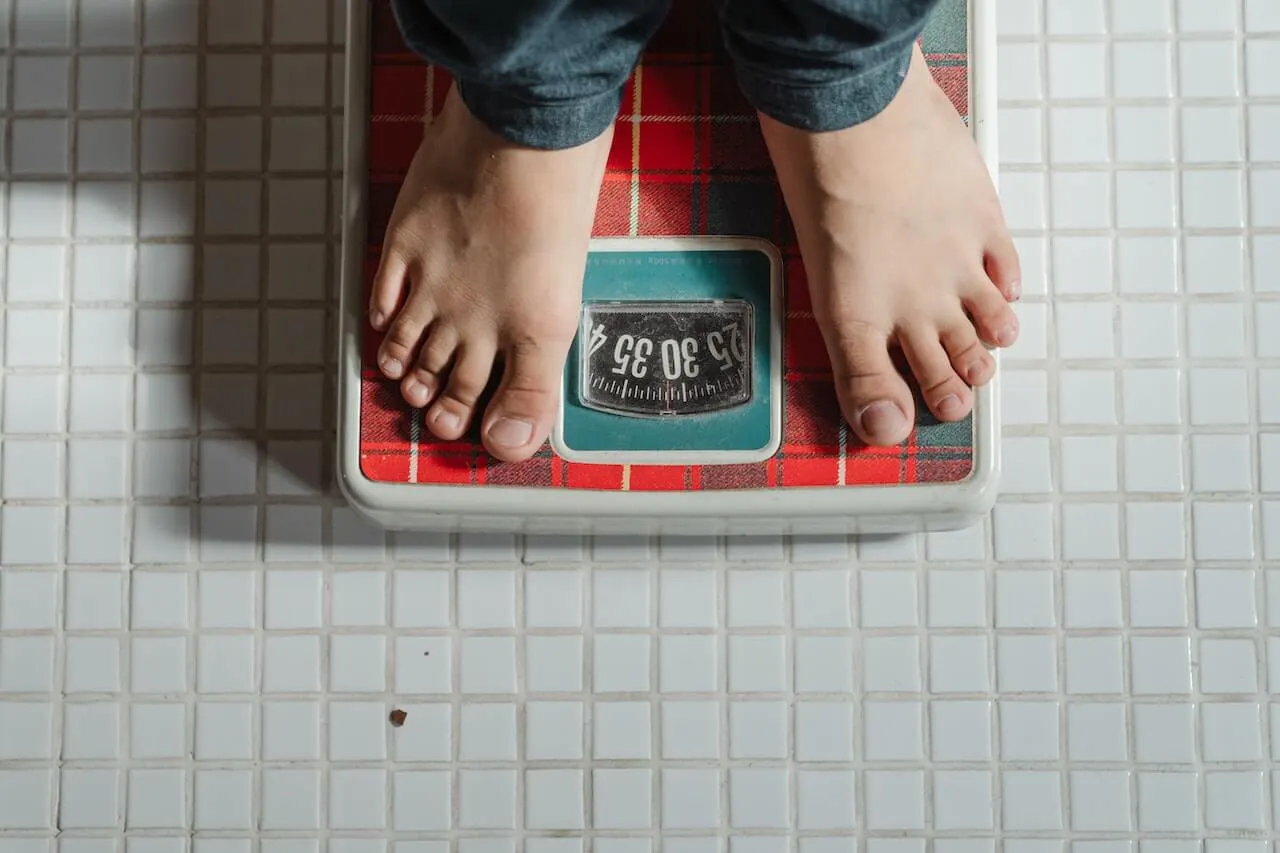Key Takeaways
- Supporting your immune system during cold and flu season also protects your metabolic health, including blood sugar control.
- Simple lifestyle shifts, such as eating nutrient-dense meals, staying active, managing stress, and getting enough sleep, can strengthen your immune defenses.
- Using Signos, you can track how lifestyle changes and new habits affect your glucose trends, helping you stay resilient throughout the season.
{{mid-cta}}
As cold and flu season approaches, it’s the perfect time to give your immune system the support it needs. A strong immune response not only helps protect you from bugs like the flu or common cold, but it also plays a role in keeping your metabolism running optimally. That’s because when your body is fighting off illness, inflammation, and stress can disrupt glucose patterns, leaving you more vulnerable to blood sugar swings throughout the day.
Simple, everyday habits, such as eating a balanced diet rich in antioxidants and lean proteins, prioritizing adequate sleep, exercising regularly, and managing stress, can all strengthen your defenses. With Signos, you can see how these healthy habits impact your glucose trends and overall well-being, providing you with the tools to stay resilient throughout the season.
Nutrition Strategies for Immune Support

Your immune system relies on nutrients, vitamins, minerals, antioxidants, and protein to function effectively, all of which play a crucial role in defending against viruses, the common cold, and other seasonal infections. One of the best ways to increase nutrients in your day is to eat the rainbow. A balanced diet rich in colorful fruits and vegetables, lean proteins, whole grains, and healthy fats provides your body with the essential nutrients it needs to build antibodies and maintain a robust immune response throughout the cold season.
Certain nutrients are more important than others for immune health:
- Vitamin C, found in citrus fruits, bell peppers, and broccoli, acts as a powerful antioxidant.1
- Vitamin D supports immune function and helps regulate inflammation.2
- Zinc, found in beans, nuts, and lean proteins, assists in producing infection-fighting white blood cells.3
- Probiotics found in yogurt, kefir, or fermented foods support gut health, which is closely tied to overall immune health.4
With Signos, you can track how adding these immune-boosting foods into your routine affects your glucose levels. For example, pairing vitamin C-rich citrus fruits with a protein source not only provides antioxidants but will also help stabilize post-meal glucose, supporting both your immune system and metabolic health.
Sleep and Stress Management

Most people don’t consider how their sleep impacts their immune health. In fact, getting quality sleep and managing stress are two of the most effective ways to support a healthy immune system. When you skimp on sleep, your body produces fewer infection-fighting cells and antibodies, leaving you more vulnerable to the flu virus and other seasonal bugs.5
At the same time, high stress raises cortisol levels, which can weaken your immune response and drive up glucose levels when left unmanaged long-term.6 Over time, that combination can affect your metabolic health.
Even small changes can make a significant difference: aim for 7–9 hours of restful sleep most nights and incorporate a stress-reducing habit, such as deep breathing, journaling, or gentle movement. These practices help reduce your body’s stress response and may strengthen your immune defenses, especially during peak cold and flu season.
Using Signos, you can see in real-time how stress and sleep quality are connected to your glucose levels. For example, tracking overnight glucose trends may show spikes when you’ve had a stressful day or a short night’s sleep. Many find this data motivating to prioritize better rest and recovery.
Exercise and Movement

Regular movement is one of the simplest ways to boost your immune system. Moderate physical activity, such as brisk walking, yoga, or cycling, helps improve circulation, reduce inflammation, and strengthen the body’s immune response.7 It also supports insulin sensitivity and glucose regulation, two major pieces of metabolic health.
On the other hand, skimping on movement altogether or overexerting oneself without adequate recovery can also make the body more susceptible to illness. Even 20–30 minutes of moderate activity most days can boost your immunity and help stabilize your energy levels. Short walks after meals are a simple habit that can be beneficial to add to your routine, as they help lower post-meal glucose spikes while also supporting your metabolism.
Use your CGM with the Signos app to track how different types of exercise, like light walks or strength training, affect your glucose stability throughout the day. Seeing these patterns in real time makes it easier to find the movement routine that works best for your body during cold-and-flu season.
Hygiene and Lifestyle Practices

Supporting your immune system isn’t just about what you eat or how much you move: daily hygiene plays a strong role as well. Simple practices, such as washing your hands frequently, using hand sanitizer when you’re out, and disinfecting high-touch surfaces, can significantly lower your risk of contracting the flu virus or a common cold.8 Stay hydrated, avoid close contact when others are sick, and keep up with your flu shot to give yourself additional layers of protection.
These habits might feel basic, but they’re powerful. A strong immune system functions optimally when it isn’t constantly overwhelmed by high exposures. Pairing smart hygiene habits with a balanced diet, proper sleep, and regular movement creates a strong arsenal of protection for your immune health this season.
Remember, in the Signos app, you can log lifestyle factors like sleep, meals, and stress alongside your glucose data. This makes it easier to see how habits aside from nutrition impact your metabolic health during cold-and-flu season.
Sample Cold-and-Flu Prep Routine

If it is helpful to see how these immune-supportive choices fit into a normal day, here’s what an example of an immune-boosting routine could look like during cold-and-flu season:
Morning
- Start your day with a glass of water and a balanced breakfast, such as a smoothie with citrus fruit, chia seeds, and a serving of Greek yogurt for protein and probiotics.
- Take a brisk 10–15 minute walk to get sunlight exposure, which helps regulate your circadian rhythms for better sleep and supports vitamin D production for improved immunity.
Midday
- For lunch, make a colorful salad with leafy greens, roasted veggies, grilled chicken or tofu, and a sprinkle of nuts or seeds. Add a vinaigrette on the side for an extra healthy fat boost.
- Wash your hands before and after meals to reduce the spread of germs.
- Take a short movement break: Stretching or a quick walk will break up sedentary time and support circulation.
Afternoon
- Stay hydrated with water or unsweetened herbal tea.
- Choose a healthy snack like cottage cheese with berries, or hummus with whole-grain crackers and bell peppers, both provide protein, fiber, and antioxidants.
Evening
- Create a one-pot dinner, such as lentil soup or a lean protein stir-fry with plenty of vegetables and brown rice. Balanced meals like these are packed with fiber, lean protein, and essential micronutrients to support strong immune function.
- Remember, de-stressing can support your immune health. Take time to relax in the evenings: try meditation, journaling, or simply a calming shower to manage stress and support recovery.
Night
- Aim for 7–9 hours of quality sleep. A consistent bedtime routine (plus, dimming bright lights, turning off screens, and including a relaxing activity like reading) helps strengthen your immune response, too.
Remember, use your CGM and the Signos app to see how balanced meals, hydration, and even sleep quality affect your glucose trends. These patterns can help highlight how well your immune system and metabolism are working together, and where you may need minor adjustments.
The Bottom Line
Prepping for cold-and-flu season doesn’t have to be complicated, and even with your best efforts, you might still catch a bug. Focus on what you can control: healthy nutrition, movement, quality sleep, and stress management. With Signos, you can see how these small, daily habits add up, help you feel energized, resilient, and ready to tackle colder months.
Learn More With Signos’ Expert Advice
Cold and flu season is a great reminder that small, everyday choices add up when it comes to your health. With Signos, you can see how factors like nutrition, sleep, stress, and exercise influence your glucose and overall well-being. Explore more about how Signos can help you improve your health and check out the blog for expert insights on glucose, immunity, and metabolism.
Topics discussed in this article:
References
- Vitamin C. NIH. Accessed September 24, 2025.
- Aranow C. Vitamin D and the immune system. J Investig Med. 2011 Aug;59(6):881-6.
- Maywald M, Rink L. Zinc in Human Health and Infectious Diseases. Biomolecules. 2022 Nov 24;12(12):1748.
- Pyo Y, Kwon KH, Jung YJ. Probiotic Functions in Fermented Foods: Anti-Viral, Immunomodulatory, and Anti-Cancer Benefits. Foods. 2024 Jul 28;13(15):2386.
- Garbarino S, Lanteri P, Bragazzi NL, Magnavita N, Scoditti E. Role of sleep deprivation in immune-related disease risk and outcomes. Commun Biol. 2021 Nov 18;4(1):1304.
- Cortisol Physiology. StatPearls. Accessed September 24, 2025.
- Nieman DC, Wentz LM. The compelling link between physical activity and the body's defense system. J Sport Health Sci. 2019 May;8(3):201-217.
- Healthy Habits to Prevent Flu. CDC. Accessed September 24, 2025.



.webp)
.svg)










.svg)
.svg)
.svg)
.svg)
.svg)
.svg)
.svg)
